In today’s fast-paced world, the need for calm, grounding, and restoration is more important than ever. One powerful path to inner stillness is sound meditation—a practice that uses harmonic vibrations to guide the mind into deep relaxation and healing. Whether you’re a beginner or a seasoned practitioner, the tools you use can profoundly shape your experience. In this post, we will explore a selection of sound meditation instruments. In addition to my crystal bowls and Himalayan bowls, I sometimes incorporate other instruments in my sound meditations – depending on the intention of the experience. What is wonderful, is that these instruments are relatively inexpensive, so you can use them at home or when traveling. Here are some of the more common instruments used in sound meditation.
Tuning Forks
These instruments are gentle yet surprisingly powerful. Their story begins back in 1711, when John Shore, a trumpeter and lutenist for composers like H. Purcell and G.F. Händel in London, invented them for musical tuning. Fast forward to the mid-1970s, and these tools found a new purpose in the world of sound healing. Tuning forks are finely calibrated tools used to deliver precise frequencies directly to the body or energy field. When struck, they emit a clean, clear tone that can help balance the nervous system, relieve pain, and promote mental clarity. Commonly used in sound healing, Reiki, and chakra balancing, tuning forks are ideal for targeted therapeutic work. They’re particularly effective for addressing energy blockages in the meridian and chakra systems, helping the body kickstart its own healing process. Due to their subtle sound, Tuning forks are most often used in 1-to-1 therapy but can also be used in small groups.
There are two types of tuning forks:
Unweighted forks – Used near the ears or in the energy field (biofield) for Energy Field Healing. To use,
- Strike the fork and hold it 3–6 inches from the body
- Slowly move it around the energy field (biofield), pausing over any areas that feel “blocked” or heavy
- Use intuitive scanning or a chakra chart to guide where to direct sound
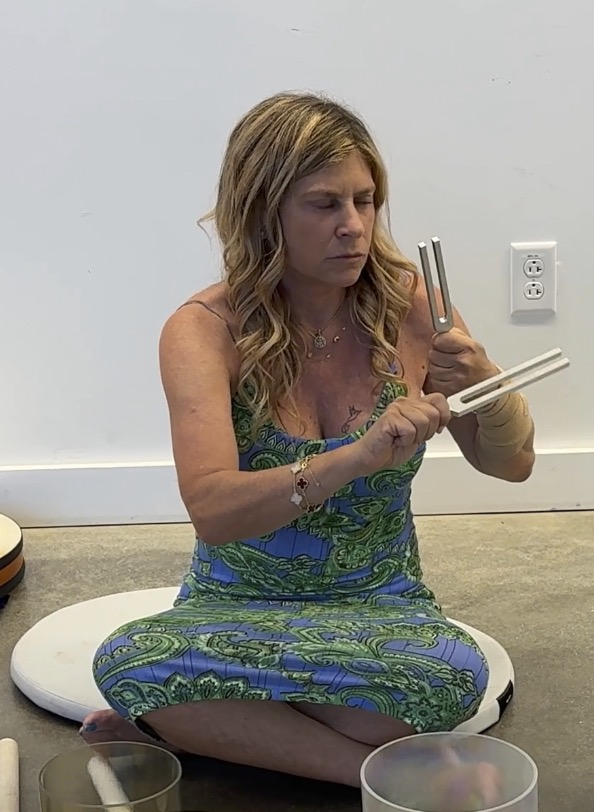
Weighted forks – Have discs on the ends which are placed directly on the body (e.g., joints, acupressure points). These forks are used for physical body healing. To use,
- Strike the fork and place the stem directly on areas like:
- Joints (i.e. wrists or ankles)
- Obvious areas of stress such as neck, temples, forehead
- Muscles
- Acupuncture or reflexology points
- Chakras
- Hold it in place until vibration stops. Repeat 2–3 times per area
You can use either type of tuning fork in C to B notes for Chakra Alignment:
- Move from root to crown, striking each fork and moving in a circular motion above or placing them on the body
- Imagine energy flowing freely as each chakra is harmonized
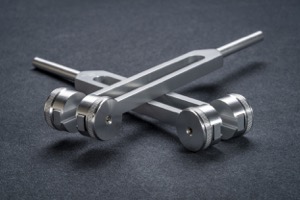
Drums
Rhythmic drumming has been used for centuries in shamanic ceremonies and group gatherings to induce a state of trance. Repetitive drumming can cause altered states of consciousness and has been associated with physiological and therapeutic effects. Studies have shown that 15 minutes of repetitive drumming, often used in indigenous cultures for shamanic journeys, induces altered states of consciousness characterized by vivid imagery and perceptual changes. Drums connect and resonate with people, regardless of their musical know-how. Many people find themselves drawn to drumming, even those without any musical background, who can’t read notes, or have never played another instrument. Rhythmic patterns are a natural part of us, pulsing within and all around.
Types of Drums
Handpan or Tongue Drum – The most common type of drum, the handpan or tongue drum produces an enchanting sound and can create beautiful melodies that induce a tranquil and hypnotic state. Sometimes known as a tongue drum, the handpan is ingeniously crafted from two metal half-shells that are glued together. At its center is the ding, a central tone field, surrounded by a circle of at least seven different tone fields on the upper shell. The gu is an opening on the underside that contributes to its unique sound. These drums can vary in size and can be played solo or in harmony with other instruments creating a captivating musical experience. It is a great drum for beginners as well as seasoned meditators.
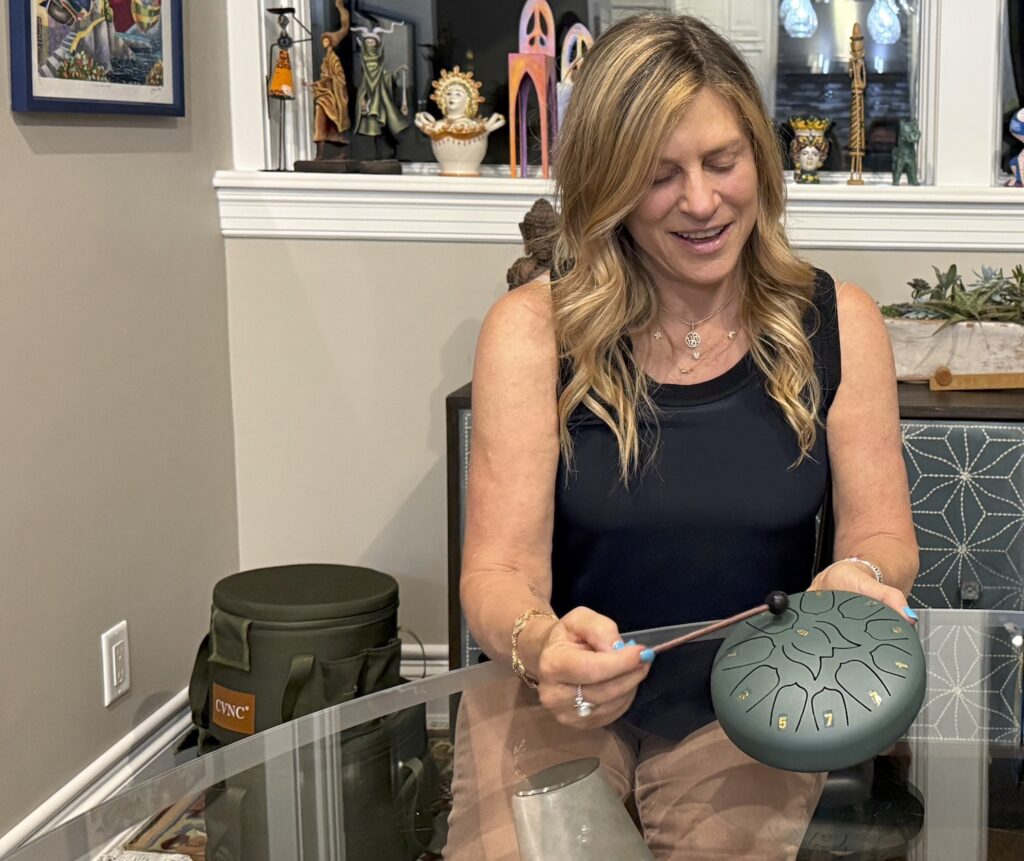
Ocean Drum – The ocean drum is a frame drum filled with small metal balls that, when moved, create the sound of waves. When played gently, its sound can be very soothing, evoking the feeling of being by the ocean. Ocean drums come in different sizes, and generally, the smaller the drum, the more affordable it is. This instrument is excellent for grounding energy. Mimicking the natural rhythm of ocean waves, it transports listeners to a shoreline of serenity. By tilting and rotating the drum, you create the soothing ebb and flow of water, which can calm the breath, settle the mind, and bring a feeling of deep emotional release. This drum encourages slow, mindful breathing; connects you to nature’s rhythm; and is perfect for grounding during meditation.
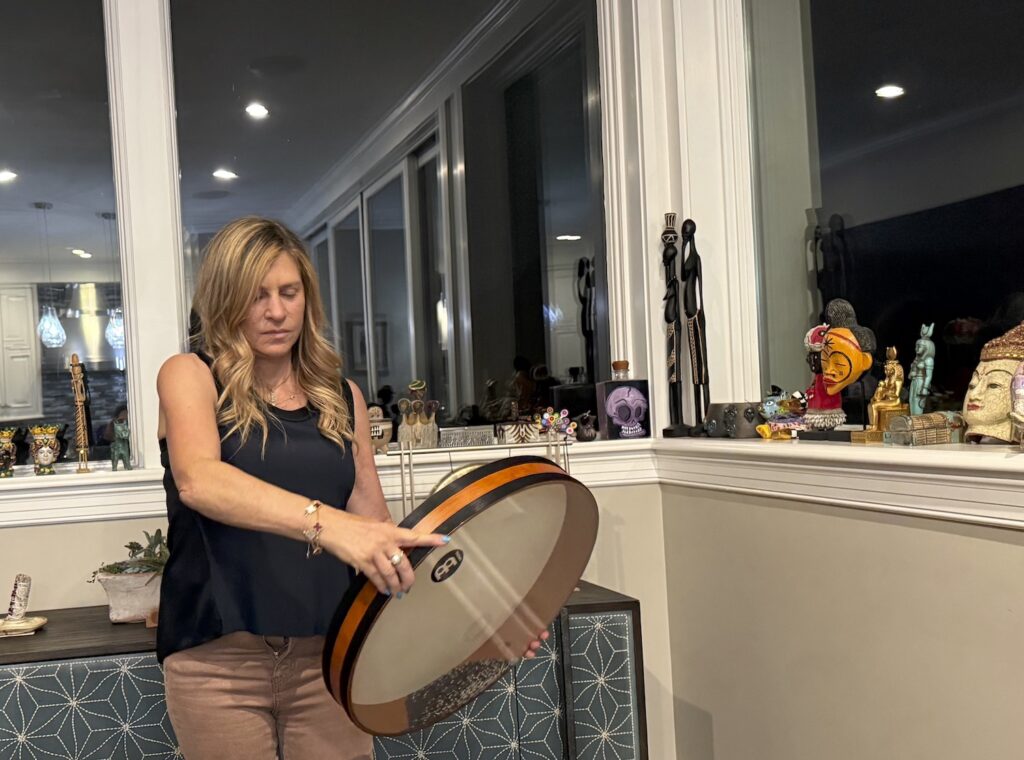
Woodstock Zenergy Chakra Chime
The Woodstock Zenergy Chakra Chime is designed to help align the body’s energy centers. This metaphysical chime emits clear, singular tones that support awareness and inner balance. Gently tapping the chime helps refocus the mind, making it ideal for yoga, mindfulness practices, or opening and closing sound baths. It creates clear, singular tones for chakra activation and is compact and easy to travel with. My set combines crystals representing each chakra for a deeper meditative experience.
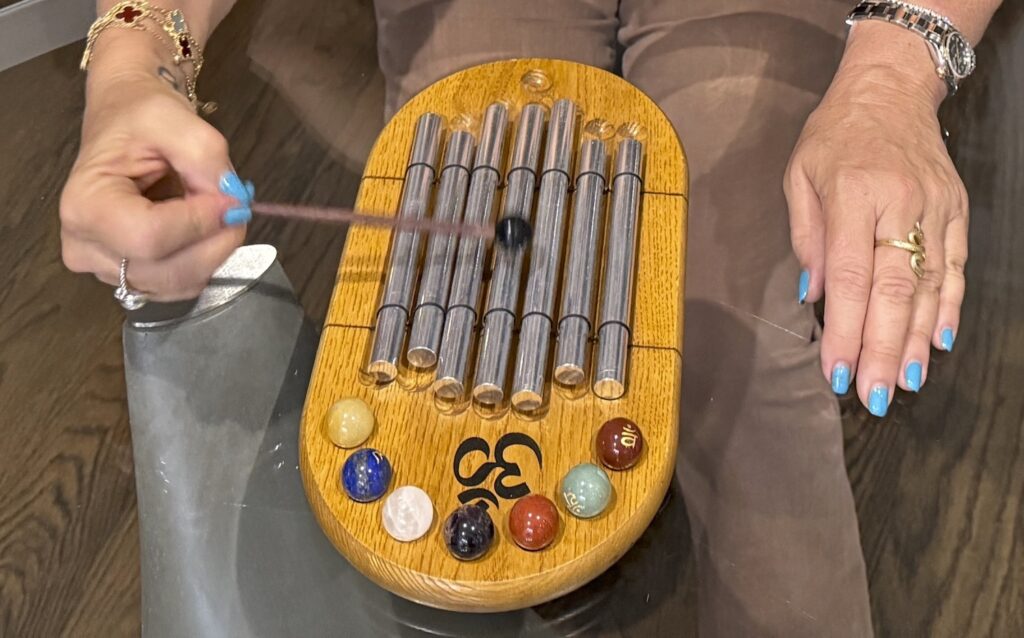
Koshi Chimes
Koshi wind chimes are like a whisper from heaven – their soothing, angelic sound is truly mesmerizing. These are crafted in a bamboo style. When they chime, it’s as if they’re creating a gentle, positive flow of energy. It’s not just a sound; it’s an experience that uplifts and rejuvenates the spirit as they ae naturally harmonizing and deeply relaxing. Handcrafted in the French Pyrenees, Koshi® Wind Chimes are tuned to the elements—Earth, Water, Fire, and Air. Their ethereal tones are often used in sound journeys and outdoor meditations. As they gently sway in the breeze, they create a magical, immersive soundscape that enhances presence and peace. They can be purchased separately or together. I end my sound baths with one of my koshi chimes to signal awakening to the present—a soft landing!
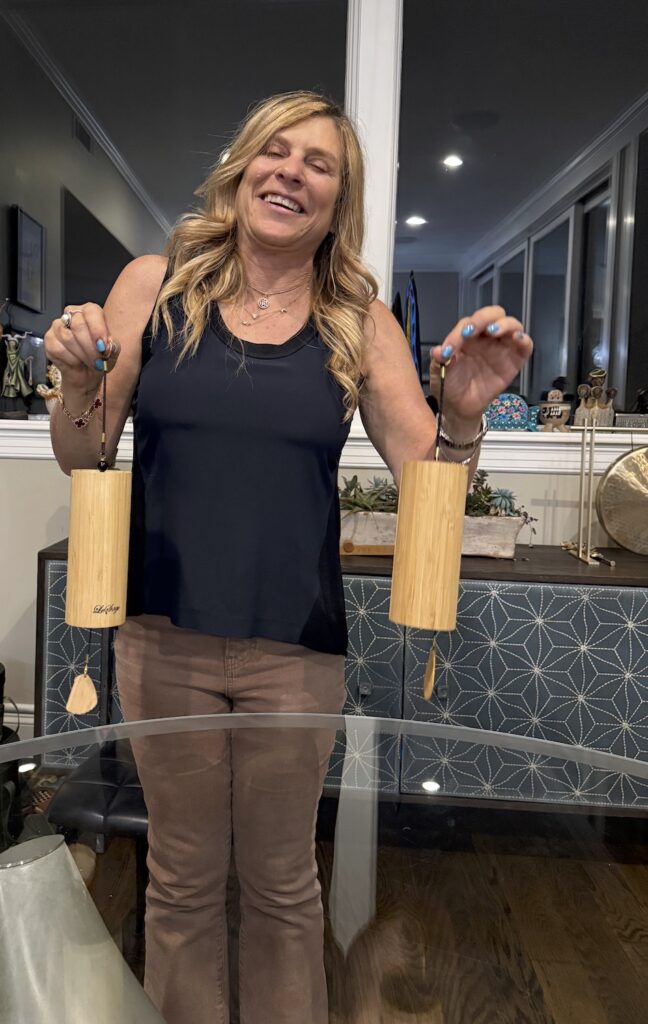
Gongs
Let’s dive into the fascinating world of gongs! You’ve probably seen them in movies or spotted them in yoga studios, Zen temples, and various other places. Gongs have soared in popularity, and there’s a great reason for that. Their powerful, cosmic, almost mystical sound has the ability to transport listeners to another dimension. Imagine being completely enveloped in the deep resonance of a gong bath! Many describe it as a process of being ‘shaken up,’ a way to clear out all the negative energies from the mind and body. Gongs can be played in many ways -soft and soothing, or loud and even jarring – depending on the intention. They aren’t just a recent fad; they’re steeped in history. These ancient instruments first made their appearance in the 6th century CE in Tibet and have been integral to spiritual ceremonies and religious rituals ever since. My gong is one of my prized sound instruments is this handmade, etched gong which I purchased in Kathmandu, Nepal last March.
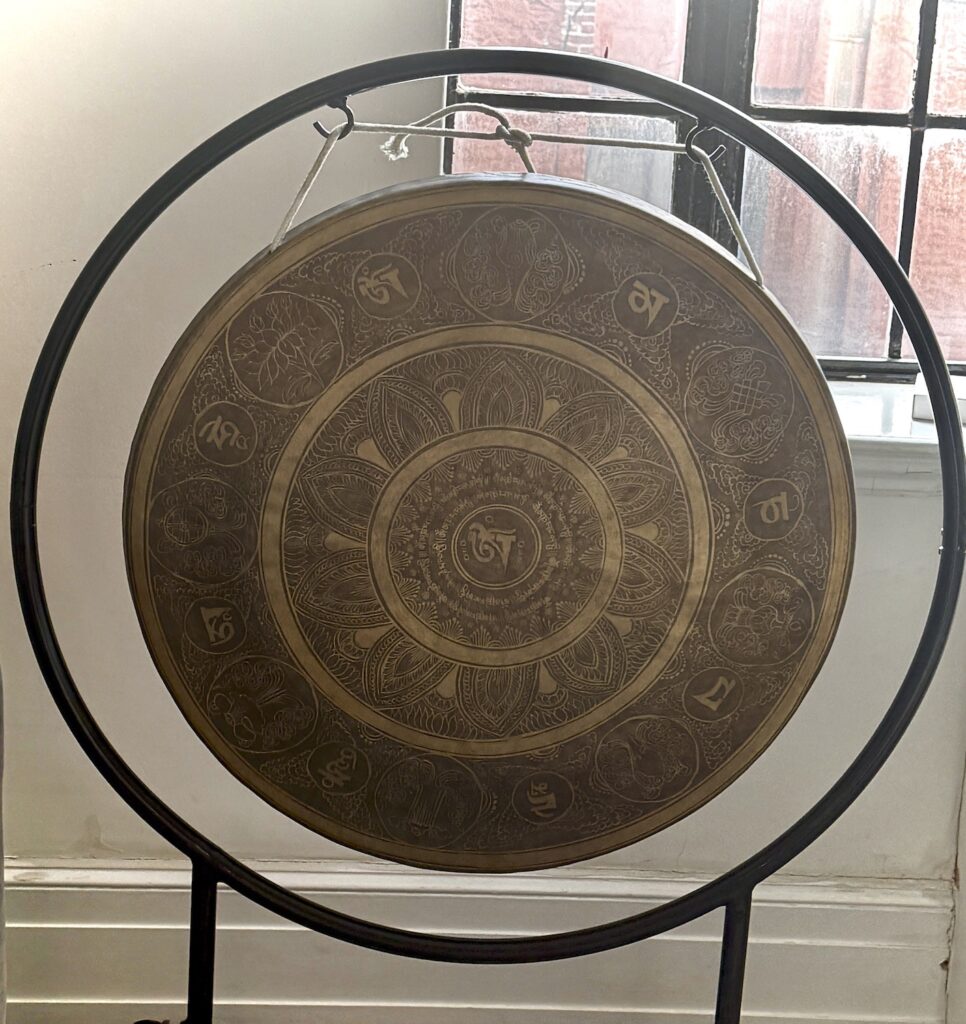
Tingsha Cymbals
Tingsha, with roots in ancient traditions, are often seen in Buddhist temples, their presence as timeless as the practices they accompany. Despite their modest size, they produce a sound that’s surprisingly loud and clear, making them ideal for clearing the energy of spaces and starting or ending a meditation session. Higher quality tingsha can sustain their tones for several seconds, creating a lingering resonance that slowly fades into silence. Tingsha cymbals are small, so they are perfect for travel. The cymbals allow you to carry a piece of this ancient tradition with you wherever you go, infusing your journey with their unique sound and energy. Sound practitioners often use tingsha cymbals or a small Himalayan bowl to signal the beginning or end of a sound session.
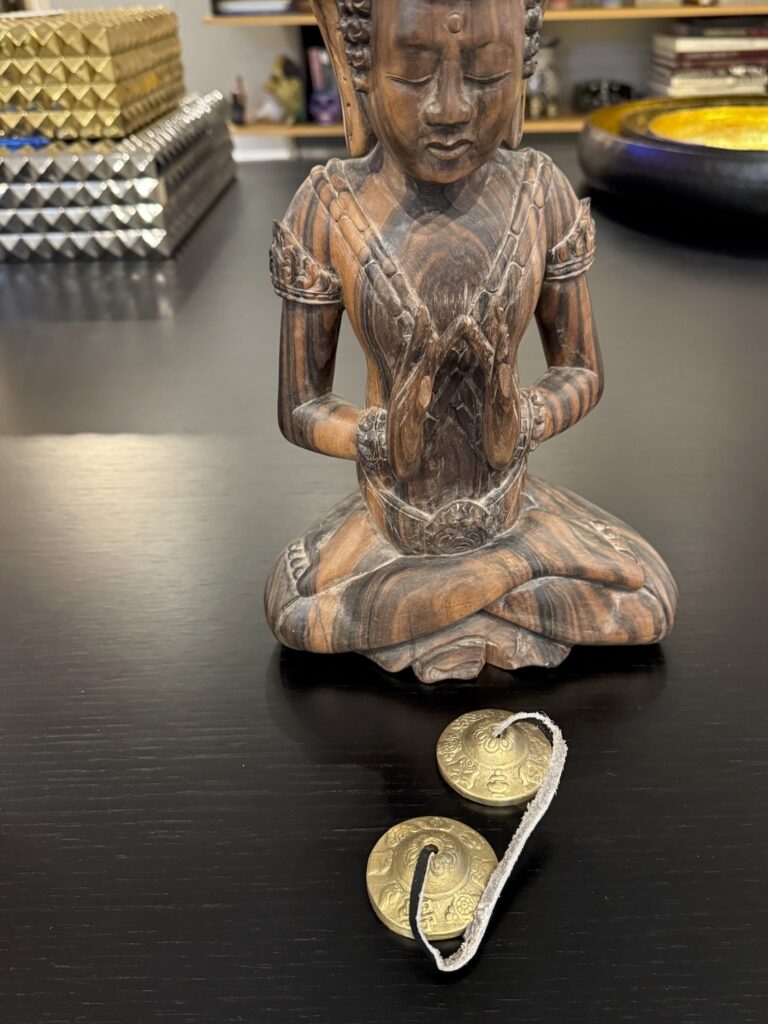
Combining Instruments for a Rich Soundscape
Each of these instruments brings its own frequency, vibration, and emotional texture to a meditation practice. When combined, you can create a layered, multisensory journey that supports deep healing and transformation.
Sound meditation isn’t just about listening—it’s about feeling. The instruments you choose are more than tools; they are gateways to the inner self. Whether you’re meditating alone, leading a group, or simply looking to bring more peace into your daily life, these sound tools offer a sacred, soothing resonance that reconnects you to your essence.
When I lead my general group sound meditations, I tend to use mainly the crystal singing bowls and perhaps one or two other instruments. For my private clients (both individual and groups), I customize a sound experience based on their input and intentions and create a unique experience. What is wonderful is that each sound session is a special experience — no two are the same!



